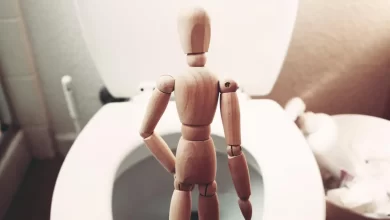Plastic is an artificial substance that has become an important part of our lives. It lasts long, can be used in many ways, and is cheap, which has made it a popular choice for a wide range of uses. Plastic is used in almost every part of our daily lives, from packing materials and household items to building materials and medical tools. Plastic has a lot of good uses, but it has also become a big problem for the environment. Plastic trash is one of the biggest sources of pollution in the world. It hurts wildlife and ecosystems on land and in the oceans. Plastic can take hundreds of years to break down, and even when it does, it often just breaks into smaller pieces that keep doing damage. As a result, there is a growing need to use less plastic and find more environmentally friendly ways to replace it.
- Plastics are made from things like coal, natural gas, salt, and crude oil. This is done through a process called polymerization or polycondensation. Plastics are made from natural, organic materials like crude oil, coal, natural gas, salt, and cellulose.
- It is a synthetic material made from a range of organic polymers, including polyethylene, PVC, and nylon.
- Leo Baekeland made the first man-made plastic, called Bakelite, in 1907. The invention started a revolution in almost every field of products.
- Plastic is incredibly versatile and can be molded into almost any shape, which has led to its use in a vast range of products.
- According to research done in 2017, Around 9 billion tons of plastic have been produced since the 1950s, with approximately 91% of it not being recycled.
- Plastic can take 20 to 500 years for plastic to break down, and when it does, it often only breaks down into smaller pieces, known as microplastics. A plastic bag takes 1,000 years to break down in a landfill.
- Plastic waste is a major environmental issue, with an estimated 14 million tons of plastic ending up in the oceans every year.
- Plastic pollution can harm wildlife and marine life, with animals becoming entangled in plastic debris or ingesting it, leading to illness or death.
- Single-use plastics, such as straws, plastic bags, and disposable cutlery, are major contributors to plastic waste and pollution.
- Many countries and organizations are taking steps to reduce plastic waste, including banning single-use plastics, improving recycling systems, and promoting sustainable alternatives to plastic.
- Norway is the world leader in recycling plastic bottles because of its refundable deposit program. Through this system, 97% of all plastic bottles in this Scandinavian country are recycled, making Norway the country that recycles the most plastic. From that, 92% is turned back into bottles.
- There is still much work to be done to address the plastic pollution crisis, but raising awareness and taking individual and collective action can help make a positive impact.
- China is the biggest producer as well as the biggest exporter of plastic and plastic products. The country produced 32% of the total plastic in the world in 2021.
- The United States is the world’s largest importer of plastic goods, followed by China and Germany.
- By 2050, plastic ingestion will have harmed 99 percent of the world’s seabird species.
- Plastic production has increased dramatically since its adaption, with global production of 380 million metric tons every year.
- About 4% of the world’s oil production is used to make plastic, which makes plastic a major contributor to greenhouse gas emissions.
- Plastic waste is a global problem, with plastic pollution found on every continent and almost in every ocean.
- Microplastics, tiny particles of plastic less than 5mm in size, have been found in drinking water, seafood, and even the air we breathe.
- Plastic pollution can have economic impacts, such as on the tourism and fishing industries, as well as on human health.
- Plastic pollution can also have social justice implications, with communities of color and low-income communities disproportionately affected by plastic waste and pollution.
- Plastic pollution can be tackled through a range of solutions, including reducing plastic production, improving waste management systems, and promoting the use of sustainable alternatives to plastic.
- Innovations in materials science and technology are also offering new solutions to the plastic pollution problem, such as bioplastics and closed-loop recycling systems.
- Ultimately, addressing the plastic pollution crisis will require a multi-pronged approach that involves individuals, businesses, governments, and international organizations working together toward a more sustainable future.
- Plastic bags are one of the most common types of plastic waste, with over 5 trillion plastic bags used each year globally.
- The Great Pacific Garbage Patch, a massive accumulation of plastic waste in the ocean, is estimated to be twice the size of Texas. It is composed of an estimated 3.6 trillion pieces of plastic and was discovered in 1997.
- The World Economic Forum estimates that if current trends continue, there will be more plastic than fish in the world’s oceans by 2050.
- Plastic waste can also release toxic chemicals into the environment, such as bisphenol A (BPA) and phthalates.
- Plastic pollution is a complex issue that requires a range of solutions, from reducing plastic production and consumption to improving waste management and promoting circular economy models.
- Plastic waste can also be a valuable resource, with the potential to be recycled into new products and materials.
- Education and awareness-raising campaigns can play an important role in tackling plastic pollution by encouraging individuals to reduce their plastic consumption and properly dispose of plastic waste.
- Plastic pollution can also impact human health, with exposure to certain types of plastic and chemicals found in plastics linked to a range of health problems, including cancer, developmental disorders, and reproductive issues.
- The use of plastic has become so widespread that it is now found in the most remote areas of the planet, including the Arctic and Antarctic regions.
- Many companies are taking steps to reduce their plastic footprint, with some committing to using only recyclable or biodegradable packaging materials.
- Plastic pollution is not just a problem in the oceans but also in freshwater systems, with plastic waste found in rivers, lakes, and even groundwater.
- Plastic production is expected to increase further in the coming decades, with the demand for plastic products growing in developing countries.
- Governments around the world are taking action to address plastic pollution, with some implementing plastic bag bans, regulating the use of single-use plastics, and investing in recycling infrastructure.
- Plastic waste not only affects land and marine environments, but it also impacts the air we breathe. When plastic is burned, it releases toxic chemicals that can be harmful to human health.
- Plastic waste also has an impact on wildlife, with animals becoming entangled in plastic debris or mistaking it for food.
- The production of plastic bottles requires a significant amount of energy, with an estimated 17 million barrels of oil used each year to produce plastic water bottles in the United States alone.
- The United Nations Environment Programme stated that roughly half of all plastics are made to be used just once and then thrown away. A lot of plastic trash ends up in dumps, where it might never break down. It is a major threat to the health of our planet and oceans.
- Single-use plastic items, such as straws, cutlery, and cups, are major contributors to plastic waste. These items are often used for only a few minutes before being discarded.
- Plastic waste can have economic costs, such as lost tourism revenue due to plastic pollution on beaches, or the cost of cleaning up plastic waste.
- The use of biodegradable plastics is not a perfect solution to plastic pollution, as biodegradable plastics still require resources to produce and may not break down in the environment as quickly as intended.






